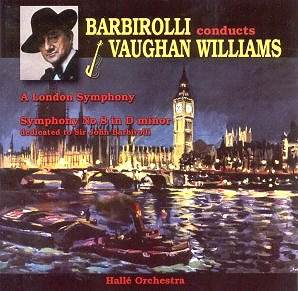 Composer: Edward Elgar, Frederick Delius
Composer: Edward Elgar, Frederick Delius
Works: Violin Concerto (Elgar), Violin Concerto (Delius)
Performers: Albert Sammons (violin), Liverpool Philharmonic Orchestra, Malcolm Sargent (conductor), New Queen’s Hall Orchestra, Henry Wood (conductor)
Recording: Philharmonic Hall, Liverpool, 4 July 1944 (Delius); Queen’s Hall, London, 18 Mar, 10 April 1929
Label: Naxos Historical 8.110951
The coupling of Elgar’s and Delius’s violin concertos performed by Albert Sammons serves as a significant historical reissue, illuminating the profound contributions of English composers during the early 20th century. Elgar’s Violin Concerto remains a cornerstone of the repertoire, embodying the emotional depth and complex textures characteristic of his late style. Delius’s concerto, while not reaching the same heights of popularity, nonetheless captivates with its lyrical beauty and impressionistic qualities. The pairing of these works, both showcasing Sammons—an underappreciated titan of the violin—affords listeners a unique opportunity to appreciate the distinct yet complementary voices of two of England’s most important composers.
Sammons’s interpretation of the Elgar concerto is nothing short of monumental. His 1929 recording is significant as it was the first uncut version, allowing the work’s intricate emotional landscape to unfold in its entirety. From the outset, Sammons’s expansive tone commands attention, showcasing both technical prowess and interpretative depth. The first movement, imbued with a restless passion, sees Sammons navigate the myriad technical challenges with ease. His rhetorical approach is evident, particularly in the climactic moments where his rich, burnished tone imbues the music with a sense of yearning. This is a stark contrast to the more youthful vibrancy exhibited by Yehudi Menuhin in his celebrated recording, where the youthful exuberance offers a different, yet equally valid, perspective on the work. Sammons’s maturity as a performer is palpable; he takes liberties with tempo that speak to a seasoned understanding of Elgar’s penchant for fluctuations in pulse, even if conductor Malcolm Sargent’s more straightforward approach sometimes seems to stifle these natural ebbs and flows.
The slow movement is where Sammons truly shines, weaving a tapestry of nostalgia and introspection that resonates deeply. His ability to sustain a long, lyrical line while maintaining an expressive vibrato provides a poignant counterpoint to the orchestral backdrop. The contrast in tone quality between Sammons and Menuhin is revealing; while Menuhin’s sound is often lighter and more ethereal, Sammons’s approach is grounded, his full-bodied sound allowing for a more dramatic interpretation. This is particularly evident in the accompanied cadenza, which Naxos wisely presents on a separate track, allowing listeners to fully appreciate Sammons’s ability to transform the technically demanding passage into a moment of profound emotional resonance.
Delius’s Violin Concerto, recorded by Sammons in 1944, presents a different challenge. While it lacks the structural cohesion of Elgar’s work, it possesses a lyrical charm that Sammons captures beautifully. His interpretation emphasizes the flowing, song-like quality of the solo line, deftly navigating the work’s more episodic nature. There is a warmth to Sammons’s performance that highlights Delius’s impressionistic style, and his technical finesse allows the work’s subtleties to rise to the surface rather than becoming mired in its occasional rambling tendencies. Sargent’s orchestral support complements Sammons well, providing a vibrant and idiomatic backdrop that allows the soloist’s voice to emerge with clarity.
The engineering of these historical recordings deserves commendation, as Mark Obert-Thorn’s restoration brings a surprising clarity to the sound, allowing the intricacies of both the solo lines and orchestral textures to be discerned despite the limitations of their era. Listeners will note the characteristic ambient noise of early recording techniques, yet this should not detract from the artistry on display. The warmth and richness of Sammons’s tone remain intact, making these performances feel immediate and engaging.
Sammons’s dual presentation of the Elgar and Delius concertos serves not only as a testament to his exceptional artistry but also as an important historical document that enriches our understanding of English music. While the Elgar concerto stands as a towering achievement in the violin repertoire, the Delius work, though less celebrated, is elevated by Sammons’s strong profile and lyrical interpretation. Collectively, these recordings are essential listening for anyone interested in the evolution of the English violin tradition, and this Naxos release is an invaluable addition to the catalog. The emotional depth and technical brilliance captured here ensure that both concertos—despite their differences—resonate powerfully in the hands of a master violinist.



